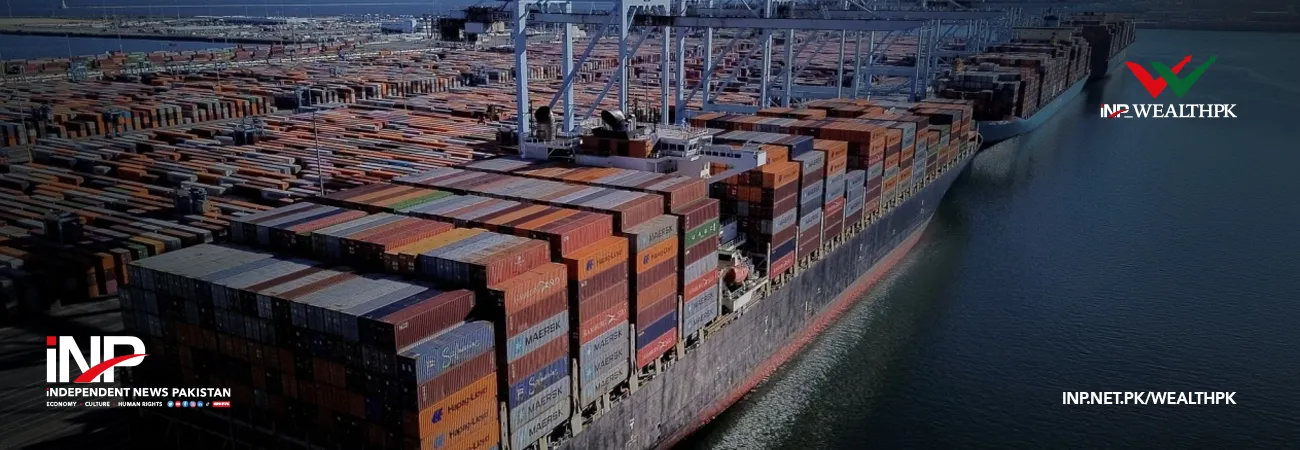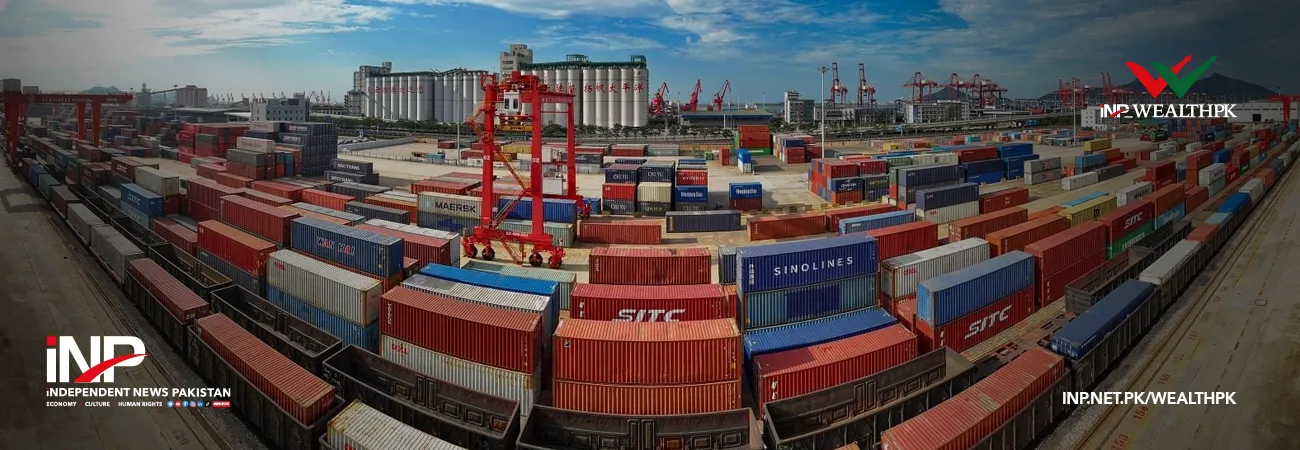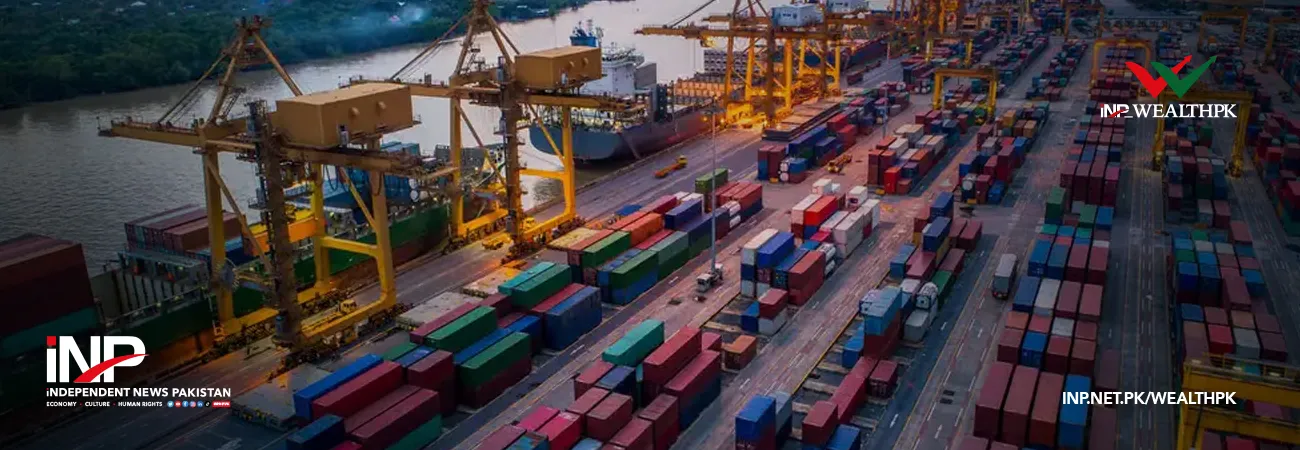آئی این پی ویلتھ پی کے
Ayesha Saba
China’s forthcoming five-year plan (2026–2030) envisions a deeper integration of development and security, emphasising resilient infrastructure, secure supply chains, and regional connectivity. For Pakistan, this direction reaffirms the centrality of the CPEC in Beijing’s long-term vision while offering new openings to strengthen logistics, trade, and digital networks across South and Central Asia.
In an exclusive interview with Wealth Pakistan, Dr Hassan Daud Butt, former project director of CPEC and senior adviser at the China Study Centre and Energy China Pakistan, highlighted that China, as the world’s most populous nation and a global economic powerhouse, continues to anchor its international development agenda in the Belt and Road Initiative (BRI). “Designed to provide the fastest and most cost-effective trade route linking China to global markets, CPEC remains central to Beijing’s broader vision of seamless regional integration.”
“China’s model today is not limited to roads and power plants. It is moving toward integrated ecosystems where logistics, innovation, and technology come together,” he said. “Pakistan should see this shift not as a departure from CPEC’s early roots, but as an opportunity to reposition itself through technology-backed, innovation-driven connectivity.” Gwadar Port, a key pillar of the CPEC, is transitioning from a deep-sea port into a broader economic hub. To fully realise its potential, Pakistan must address core structural and administrative challenges, he added.
Butt said that targeted Chinese investment in automated cargo handling, modern warehousing, and cold-storage facilities can significantly boost the port’s efficiency. With streamlined processes and improved infrastructure, Gwadar can emerge as a cost-effective, time-saving transit corridor offering strong incentives for regional and global logistics operators. A coordinated, technology-driven approach will ultimately position Gwadar as a pivotal gateway for trade across South Asia, Central Asia, and the Middle East, he explained.
Dr Butt emphasised that Pakistan can absorb and localise industries that China is gradually relocating overseas, particularly in textiles, electronics, light engineering, and consumer manufacturing. With lower labour and land costs, Pakistan can attract these industries if it strengthens the ease of doing business and revives targeted investment frameworks similar to those successfully employed in 2013, he said.
The former CPEC project director also acknowledged recent improvements in Pakistan’s governance and coordination mechanisms, especially through the Special Investment Facilitation Council, which has accelerated decision-making and improved investor confidence.
However, he stressed that sustained progress will require regular reviews and reforms within key institutions. These include strengthening the vocational training ecosystem, enhancing the technical training quality of the National Vocational and Technical Training Commission, and enabling the Higher Education Commission to better promote research and innovation relevant to emerging industries.
Butt concluded with a pointed reminder that Pakistan must move beyond rhetoric. “To truly benefit from China’s evolving connectivity vision, the country must adopt actionable, measurable reforms that translate policy ambitions into ground-level industrial transformation. With timely policy alignment and strategic focus, Pakistan stands well-positioned to turn China’s next wave of innovation-driven global connectivity into a powerful engine of national economic growth.”
Meanwhile, talking to Wealth Pakistan, Jamshed Ahmed, Investment and Industrial Specialist, CPEC, the Ministry of Planning, Development and Special Initiatives, said both Pakistan and China are committed to aligning the multibillion-dollar project with Pakistan’s national priorities underpinned in URAAN Pakistan, the economic transformational plan.
He noted that in its second phase, CPEC will focus on five key corridors — Growth, Innovation, Green Development, Livelihood, and Opening-Up/Regional Connectivity. “The Regional Connectivity Corridor, aimed at strengthening trade and connectivity with China and the wider region, is fully aligned with China’s 2026-2030 connectivity strategy. Both Pakistan and China are working to ensure that CPEC’s implementation aligns with national priorities, with the connectivity corridor reflecting shared strategic objectives of the two countries,” he said.
Ahmed noted that the government of Pakistan is working on a multimodal initiative, including rail, road, sea and air connectivity, to enhance transportation links and trade connectivity for its landlocked neighbours. “The aim is to facilitate regional trade, particularly with Central Asian Republics, creating economic benefits for all involved parties by establishing efficient and shorter trade routes.”
He highlighted that under CPEC, both sides have already embarked on joint development of special economic zones, with the Rashakai SEZ as an existing example, developed by a Chinese enterprise. “Both Pakistan and China are also engaged in developing other model zones, which will provide an excellent opportunity for Islamabad to adopt these successful and modern development practices in the rest of the zones,” he said.

Credit: INP-WealthPk











